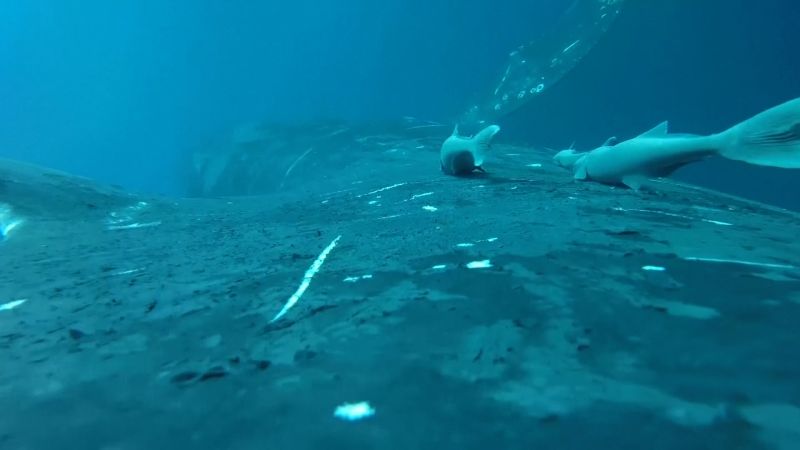Scientists off the coast of Queensland, Australia, have recorded remarkable footage showcasing the unique relationship between humpback whales and remoras, also known as sucker fish. The video reveals these small fish engaging in what appears to be an exhilarating game of chicken as they detach from their whale hosts just before the massive creatures breach the water’s surface.
The footage was captured using suction-cup cameras attached to humpback whales during their annual migration from the icy waters of Antarctica to warmer seas off the Queensland coast. The marine biologist, Olaf Meynecke, part of the Whales and Climate Research Program at Griffith University, initially aimed to study whale behavior but was pleasantly surprised by the frequent appearances of the remoras in the video feeds.
Dynamic Surfing Behaviour
The remoras exhibited impressive timing and agility, returning to the whales with the precision of Olympic gymnasts. These fish, which often live upside-down and feed on dead skin flakes, ride on the backs of large marine mammals, taking advantage of the whales’ movement for both transport and sustenance. Meynecke noted the striking behavior of the remoras: “Whenever the whale was breaching and doing particularly fast movements, it appears that the sucker fish were responding very quickly to the movements,” he explained.
The remoras cling to the whales using an adhesive plate on their heads, creating a vacuum seal that allows them to hang on during the whales’ powerful movements. Groups of up to 50 remoras were often spotted riding on the same stretch of the whale’s body where the cameras were attached.
A Complex Relationship
This interaction between the remoras and the humpback whales is largely viewed as mutually beneficial. The remoras feed on dead skin and parasites, while the whales gain a certain level of cleaning. Nevertheless, Meynecke’s observations suggest that the humpbacks may find their hitchhikers somewhat bothersome. He noted instances where whales with numerous remoras would breach repeatedly, seemingly attempting to dislodge the fish.
“Individuals with high numbers of these remoras were continuously breaching, and there were no other whales that they were communicating with. It appeared they were trying to get rid of some of these remoras,” he said.
The remoras typically live for about two years, raising questions about their migration patterns. The 10,000 km (6,000-mile) journey along Australia’s humpback highway, traversed by approximately 40,000 humpback whales, presents a fascinating puzzle regarding how long the remoras stay attached during this extensive migration.
Meynecke speculated on the fate of the remoras once they detach from the whales. “I suspect that the majority would probably leave at some point, maybe in temperate waters, but then where do they go?” he pondered. “Do they find other species that they can use as a host and wait until the humpback whales come back?”
In the absence of whales, remoras seek refuge with other large marine animals, including manta rays and dolphins. Their tendency to cling to divers has also led to some amusing anecdotes. “Much to the annoyance of the divers, of course,” Meynecke remarked, highlighting the often inconvenient nature of these persistent hitchhikers.
The footage not only offers a glimpse into the captivating interactions between species in the ocean but also enhances our understanding of marine ecosystems and the complex relationships that define them. As scientists continue to explore these dynamics, the remarkable behaviors of both humpback whales and their remora companions provide valuable insight into the wonders of ocean life.
